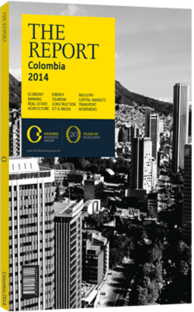Thirty-year tax exemption continues to draw major hotel investments
With a good investment climate and a 30-year tax exemption for new and refurbished hotels, Colombia’s hotel industry has expanded significantly in the past few years, attracting a growing number of international chains. But while demand is on the rise, the offer is growing at a faster pace and investors are beginning to grow cautious of a temporary oversupply in Colombia’s capital. Meanwhile, intermediate cities and niche markets are becoming increasingly attractive.
Capacity Boost
According to Colombia’s Hotel and Tourism Association (COTELCO), from 2005 to 2012, 17,000 new rooms were built. In 2013, another 2631 rooms were added. Current room stock surpasses 130,000, and another 6800 rooms will be added from projects currently in development, including 17 new hotels in Cartagena, 10 in Bogotá, eight in Barranquilla and seven in Medellín. The offer is concentrated in Bogotá, Cartagena, Santa Marta and Medellín.
The expansion of the hotel industry is largely due to a 30-year tax exemption law. Introduced in 2003, the law applies to all new and remodelled hotel projects from January 1, 2003 to December 31, 2017, and has attracted significant interest from foreign investors. An increasing number of international brands have entered the Colombian market in recent years, primarily in Bogotá, Cartagena and Medellín.
In most cases, international brands have sought strategic partnerships with local players to develop projects under stratified hotel ownership structures such as condo hotels or fideicomisos. In a fideicomiso structure, the one most commonly used, investors acquire shares in a trust, which owns and manages the hotel property. While these structures remain cumbersome barriers to enter the market, they do not seem to be deterring international brands. Since 2003, foreign direct investment in Colombia’s hotel industry has surpassed $1bn, according to COTELCO.
Oversupply
Despite rising demand, in urban centres such as the capital the offer has grown at a faster rate. According to COTELCO, while the demand has grown at annual rates of between 6% and 8% in recent years, the supply is growing at about 13%. Naturally, national occupancy rates and revenues are beginning to show signs of a slow down. In 2013, the average national occupancy rate fell 1.1 percentage points to 52.5%, from 53.6% in 2012, mainly due to lower occupancy rates in urban centres such as Bogotá and Cartagena.
Growing competition is also putting downward pressure on hotel rates. According to Hotel Price Index, visitors paid on average 5% less for accommodation in Colombian hotels in 2013 compared to 2012. The average national room rate fell to $132 from $138 in 2012, following drops in six main destinations. Barranquilla and Bogotá registered the highest rate decreases at 10% and 9%, respectively. In contrast, smaller urban centres such as Antioquia and San Andrés have seen their occupation rates increase. San Andrés has the highest rates, averaging $196 after a 5% increase in 2013.
Niche Markets
In crowded marketplaces such as Bogotá, hotels are now searching for ways to differentiate their product, with some starting to opt for concept hotels. While the capital’s hotel market may be reaching a saturation point, intermediate cities are looking increasingly attractive.
According to COTELCO, niche markets such as lowcost, limited-service hotels offer good investment opportunities. The segment has generated positive return on investment in medium-sized cities, fuelled by a growing middle class. According to Proexport, there is also considerable interest in luxury resorts around Colombia’s natural sites, including its thermal springs. In 2013 a thermal spa complex opened its doors in the town of Nuquí on the Pacific coast.
Despite the danger of a temporary oversupply in some of the country’s largest urban centres, long-term growth prospects remain positive for the hotel industry, given the tourism sector’s recent performance. According to a report by consultancy firm Jones Lang LaSalle, hotel room stock is expected to continue growing at an annual average of 5.8% in the next 10 years.
You have reached the limit of premium articles you can view for free.
Choose from the options below to purchase print or digital editions of our Reports. You can also purchase a website subscription giving you unlimited access to all of our Reports online for 12 months.
If you have already purchased this Report or have a website subscription, please login to continue.

